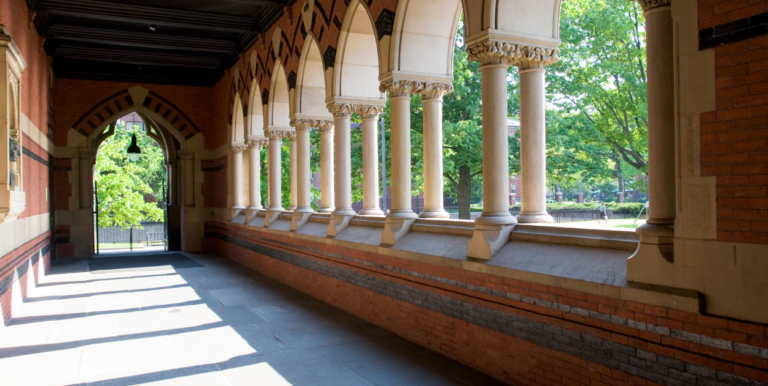Alumni giving’s growing relationship with high-profile, big money donors

Over the last year, there’s been an explosion of multi-million-dollar gifts from donors to their alma maters. This suggests 2023 is likely to join 2022 as another blockbuster year for giving in higher education. In fact, last year, alumni giving to U.S. colleges and universities jumped by 10.2%, amounting to $13.5 billion in funding.
These high-profile, high-dollar donations are changing the face of philanthropy in higher education—creating big winners today and setting the stage for a transformational change as billions of dollars transfer through generational inheritance in the coming decades.
Whether you’re a development officer at a university, a nonprofit partnering with a local college, or a grateful alumnus seeking to give back, today’s changing landscape of alumni giving will likely impact you.
In this blog, we’ll explore these evolving philanthropic dynamics and highlight why building and sustaining meaningful relationships with alumni donors remains central in higher education.
From old school donations to a new school of megagifts
Getting your name on the side of a building is, as they say, old school. But it remains an effective draw for scores of alumni looking to burnish their personal legacies. This mutually beneficial relationship with donors continues to benefit higher education institutions, especially as some alumni giving now takes the form of multi-million-dollar megagifts.
In June 2023, for example, famed investor, T. Boone Pickens—who died in 2019—gave $120 million as a legacy gift to his alma mater, Oklahoma State University (OSU). To honor Pickens’ lifetime giving to OSU of $650 million, a museum focused on his legacy is being constructed inside the school’s Boone Pickens football stadium.
But many alumni aren’t waiting to give back through a bequest. In April of this year, CEO of the hedge fund Citadel, Kenneth C. Griffin, gave Harvard University a $300 million gift. It was even more remarkable, because it was a lump-sum donation with no limits on how the money could be used. The university renamed its Graduate School of Arts and Sciences after Griffin, an almost unheard-of honor for an alum at the 386-year-old school.
In June 2023, alumna, Marilyn Simons, and her husband, James Simons, founder of the quantitative hedge fund, Renaissance Technologies—and former chair of the math department at Stony Brook University—committed $500 million to the university. Combined with New York State’s matching funds, this gift effectively tripled the school’s endowment—bringing the Simons’ lifetime giving to $1.2 billion.
Sustainable impact for future students
Other wealthy alumni giving seeks to instigate wholesale transformation of their alma maters. Their gifts are prompting colleges and universities to build more intentional relationships with donors by engaging them in their planning for future initiatives.
In March 2023, former Merck CEO and board chairman, Roy Vagelos, who met his wife, Diana, at Columbia University, gave $175 million gift to create the Vagelos Institute for Biomedical Research Education. This new addition to the Vagelos College of Physicians and Surgeons followed a $150 million gift in 2017—bringing their lifetime giving to Columbia to more than $600 million.
Other alumni seek to give back in a way that sets up other students to achieve academic and career success, similar to their own. In May 2023, for example, Spike Lee in collaboration with his literary agency created a fellowship program to provide graduates from Clark Atlanta University, Spelman College, and his alma mater, Morehouse College, with training and full-time jobs.
Similarly, Jason Blum, a drama major at Vassar University and founder of Blumhouse, the production company that created such films as Get Out and BlacKkKlansman, gave his alma mater $10 million. His donation was made to ensure students can receive a top-flight liberal arts education regardless of their ability to pay tuition.
Additionally, the Eisenberg family—whose father and children are alumni of Yeshiva University—recently gave the school $3 million to expand writing- and career-related services at the Stern College for Women, where their mother had been chairperson of the board of overseers.
When there’s a relationship, giving back comes naturally
In May of this year, Purdue University received $10 million from alums, Norman and Karen Blake, to establish an ethics center as part of the Daniels School of Business. As Norman Blake noted, “Purdue has played a pivotal role in our lives, and throughout our lives—we met here, and we have children and grandchildren, who chose to attend the university—so giving back comes naturally to us.”
Ultimately, alumni giving reflects the interests and insights these donors bring to their philanthropy: be it establishing a personal legacy, creating sustainable financial access, developing professional opportunities, or funding research and innovation. However, today’s alumni donors’ underlying motivations for giving back share a commonality: the bonds and affection created by their college experience that last a lifetime.
Tapping into this personal attachment remains central to college fundraisers looking to deepen engagement with their alumni. Today’s mega-donor alumni can donate their time, talent, and treasure just about anywhere. At the end of the day, it is alma maters’ relationship with alumni—of every kind—that brings them home.







Kate, Digital Communications Manager, Candid says:
A good place to start would be our resources for finding funding for starting a church on Candid Learning.
Harold nelson says:
I need to build a church in my community. How can you help me?